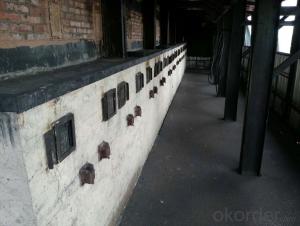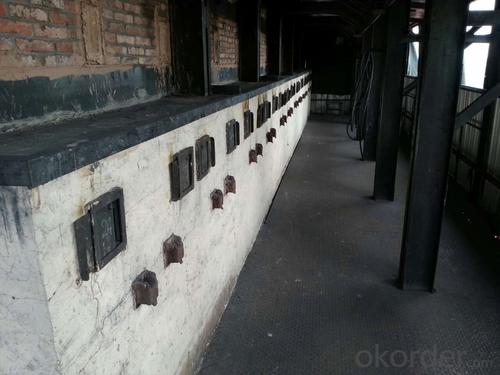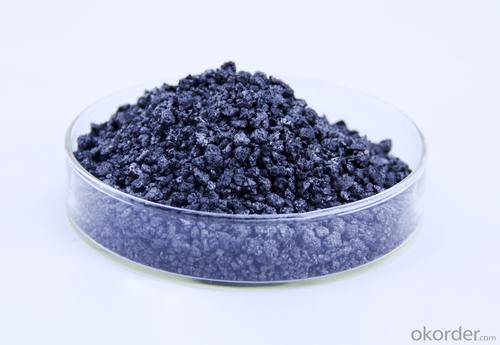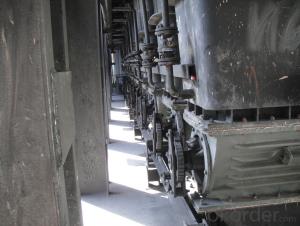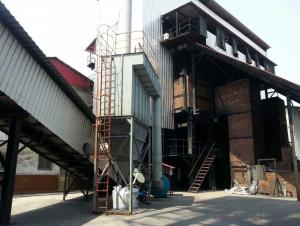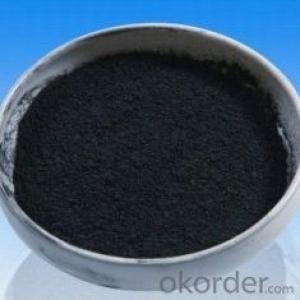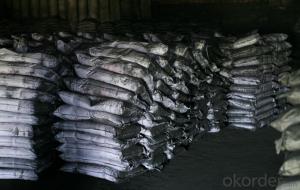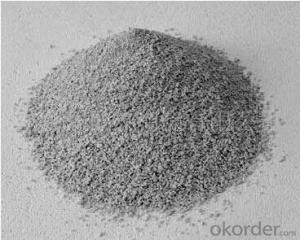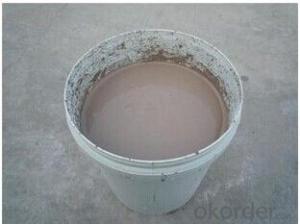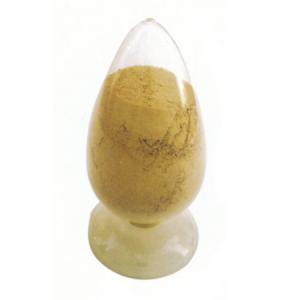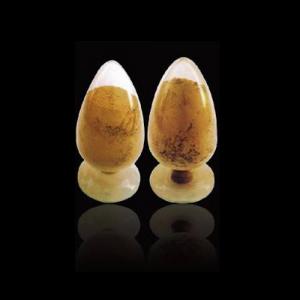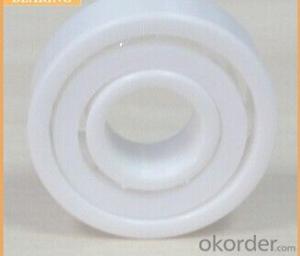Monolithic Refractories Low Nitrogen Carbon Raiser Graphite Pitch Coke for Iron and Steel Industry
- Loading Port:
- Shekou
- Payment Terms:
- TT OR LC
- Min Order Qty:
- 20 m.t
- Supply Capability:
- 1000 m.t/month
OKorder Service Pledge
OKorder Financial Service
You Might Also Like
Factory Background
The factory is majorly running and operating carbon additive (pitch coke, calcined petroleum coke and anthracite), low nitrogen carbon additive, and brake pad making material. Company is the long term supplier of Sinosteel Corporation, Shanghai Carbon Corporation, the plant of SGL Group the Carbon Company in China and some largest special carbon products producing plants.
YUAI also supplies huge amout of high quality carbon additive and graphite carbon additive to steel plants, foundries and ferrotungsten plants. YUAI has been assigned by BAO STEEL as the only organization for processing pitch coke for export purpose. The group’s major products are constantly exported to Japan, Korea, Malaysia, South East Asia countries, Europe and America, which receive praises by our consumers.
The group has invested numbers of calcinators in Anhui China to ensure the capability of producing and processing huge amount of carbon additive. Further investment is on process. According to the orders from customers, YUAI is able to processing and providing different specifications of carbon additive and other products. To provide best quality of products and to offer customers most satisfied service is YUAI’s operating objectives.
Calcined Petroleum Coke
FC:98.5%min,
S:0.5%max
A:0.8%max
V:0.7%max
Mositure:0.5%max
Size:1-5mm
This product is mainly used in steel-making and foundry. Calcined Petroleum Coke
Calcined Petroleum Coke comes from delayed coke which extracted from oil refinery. Although Calcined Petroleum Coke contains a little bit higher level of sulfur and nitrogen than pitch coke, the price advantage still makes it widely used during steel-making and founding as a kind of carbon additive/carburant.
Technology:
Laborary Equpment
In our lab,we has a high precision balance,mullfe furnace,sample making machine, dring box,sulfur measurement instrument and other calibratiing equipments.As a result,before deliverung to our customers,our products have to pass a strict test to ensure the quality and components.The testing reports will be sent to our customers to confirm untill they satisfy with it.
Packaging & Delivery
Packaging Detail:25kg paper bag into 1t weaving bag 5kg, 10kg and 20kg weaving bag into 1t weaving bag 25kg weaving bag put on pallet covered with entanglement wrap product direct into packing bag 25kg paper bag put on pallet covered with entanglement Wrap 25kg weaving bag into 1t weaving bag.
Delivery Details: 7 days

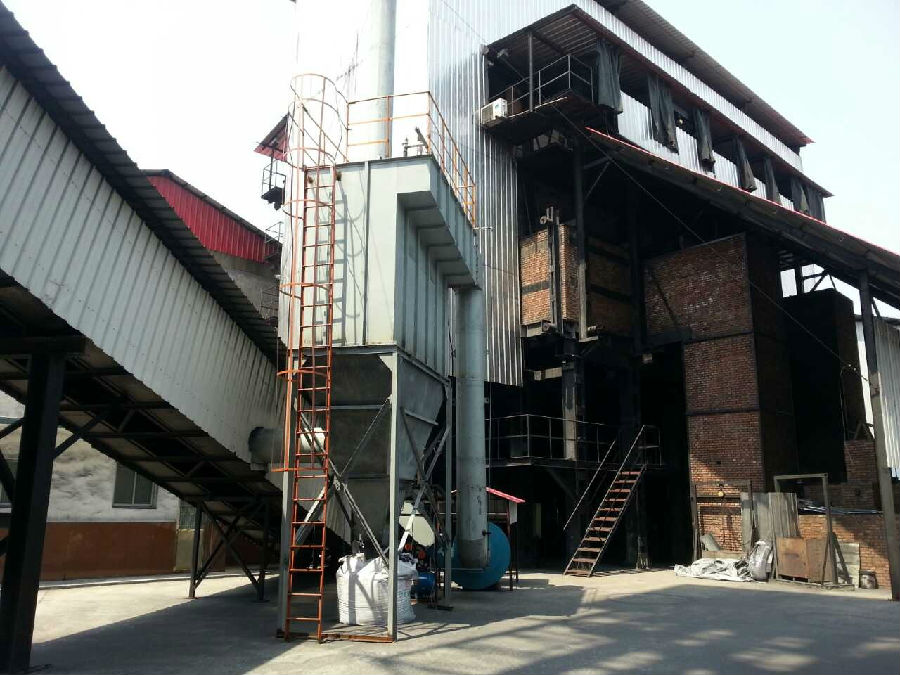
- Q: How do monolithic refractories impact the quality of iron and steel products?
- The quality of iron and steel products is greatly influenced by monolithic refractories. These refractories are extensively used in the lining of furnaces and other high-temperature environments where iron and steel undergo processing. To begin with, monolithic refractories play a vital role in insulating and safeguarding the furnace lining from the intense heat generated during the manufacturing of iron and steel. By maintaining the desired temperature, these refractories ensure consistent and proper heating of the metal, thereby achieving the desired product quality. Inadequate insulation would result in significant heat loss, leading to inefficient energy consumption and inconsistent product quality. Additionally, monolithic refractories have a significant impact on the overall cleanliness of iron and steel. During the production process, impurities and slag are formed, which can contaminate the metal if not managed properly. Refractories with high resistance to slag penetration and corrosion prevent these impurities from infiltrating the metal, ensuring a cleaner and purer final product. Moreover, monolithic refractories also contribute to the mechanical strength and durability of the furnace lining. The lining must withstand the harsh conditions and repeated thermal shocks encountered during the production process of iron and steel. A sturdy and well-designed refractory lining can resist cracking, spalling, and erosion, thereby prolonging the furnace's lifespan and reducing the risk of downtime. In conclusion, monolithic refractories have a profound impact on the quality of iron and steel products. They provide thermal insulation, prevent contamination, and ensure the mechanical integrity of the furnace lining. Manufacturers can optimize their production processes, enhance product quality, and improve overall operational efficiency by selecting the appropriate refractory material and maintaining it correctly.
- Q: How do monolithic refractories perform in aluminum holding furnace applications?
- The use of monolithic refractories in aluminum holding furnace applications has been proven to be highly efficient and effective. These refractories are designed specifically to withstand the extreme temperatures and chemical environments found in these furnaces. One major advantage of monolithic refractories is their ability to create a continuous and seamless lining in the furnace. This eliminates the need for individual bricks or tiles, reducing the risk of thermal shock and cracking. The absence of joints also minimizes the likelihood of molten aluminum leaking through the lining, ensuring better containment and heat retention. Monolithic refractories also provide excellent thermal insulation properties, which are essential in aluminum holding furnaces. They have low thermal conductivity, helping to reduce heat loss and maintain a stable temperature within the furnace. This leads to improved energy efficiency and lower operating costs. Furthermore, monolithic refractories have exceptional resistance to corrosion and chemical attack from molten aluminum and its by-products, such as dross and fluxes. This resistance ensures a longer lifespan for the refractory lining, reducing the need for maintenance and downtime. In addition, monolithic refractories are known for their easy installation and repair. They can be installed quickly and easily, requiring minimal downtime for furnace maintenance. If any localized damage or wear occurs, repairs can be efficiently made by patching or spraying the affected area. In conclusion, monolithic refractories are an excellent choice for aluminum holding furnace applications due to their seamless lining, thermal insulation properties, resistance to corrosion, and easy installation and repair. These refractories significantly enhance the overall performance and efficiency of aluminum holding furnaces.
- Q: What are the main applications of monolithic refractories in the iron and steel industry?
- Monolithic refractories play a crucial role in the iron and steel industry due to their various applications. Some of the main applications of monolithic refractories in this industry include: 1. Blast Furnaces: Blast furnaces are a key component in the iron and steel industry, where iron ore is converted into molten iron. Monolithic refractories are used to line the inner walls of blast furnaces, providing insulation and protection against the extreme temperatures and corrosive environment. They help maintain the integrity and efficiency of the furnace, ensuring smooth operation and prolonged service life. 2. Ladles and Tundishes: Ladles and tundishes are vessels used for transporting molten metal from the blast furnace to the next processing stage. Monolithic refractories are employed to line these vessels, as they can withstand the high temperatures and chemical reactions that occur during metal transfer. They prevent heat loss, minimize metal contamination, and improve the overall efficiency of the process. 3. Steelmaking Furnaces: Monolithic refractories are extensively used in various types of steelmaking furnaces, such as electric arc furnaces (EAFs) and basic oxygen furnaces (BOFs). These furnaces require lining materials that can withstand extreme temperatures, chemical reactions, and mechanical stresses. Monolithic refractories provide excellent thermal insulation, erosion resistance, and structural integrity, enabling efficient and reliable steel production. 4. Continuous Casting: Continuous casting is a widely used method for producing steel in large quantities. During this process, molten steel is continuously poured into a water-cooled mold, solidifying it into solid steel billets or slabs. Monolithic refractories are used to line the walls and floor of the mold, ensuring thermal insulation and preventing the adhesion of the solidified steel to the mold. They help maintain the desired shape of the casting and improve the quality of the final product. 5. Reheating Furnaces: Reheating furnaces are employed to heat steel billets or slabs before further processing. Monolithic refractories are utilized to line the walls and roof of these furnaces, as they can withstand high temperatures and thermal cycling. They provide insulation, reduce heat loss, and improve the efficiency of the reheating process. Overall, monolithic refractories are essential in the iron and steel industry as they offer high-temperature resistance, chemical stability, and mechanical strength. They contribute to the longevity and efficiency of various equipment and processes, ensuring smooth operations and high-quality steel production.
- Q: How are monolithic refractories repaired or replaced in iron and steel facilities?
- Monolithic refractories are commonly used in iron and steel facilities due to their superior thermal and mechanical properties. These refractories are designed to withstand high temperatures, thermal shocks, and chemical attacks. However, over time, they may experience wear and tear, leading to the need for repair or replacement. The repair or replacement process for monolithic refractories in iron and steel facilities generally involves the following steps: 1. Inspection: A thorough inspection of the refractory lining is conducted to identify areas that require repair or replacement. This inspection may involve visual examination, thermal imaging, or other non-destructive testing techniques to assess the extent of damage. 2. Removal of damaged material: The damaged monolithic refractory material is carefully removed using appropriate tools and equipment. This step ensures that the new refractory material will adhere properly to the substrate. 3. Surface preparation: The substrate or lining surface is prepared to enhance the bonding between the new refractory material and the existing structure. This may involve cleaning, grinding, or shot blasting to remove loose particles, contaminants, and any remaining damaged material. 4. Selection of repair material: Depending on the specific requirements and operating conditions, a suitable repair material is selected. This may involve choosing a similar monolithic refractory material or a specific repair product designed for the application. 5. Mixing and installation: The repair material is mixed according to the manufacturer's instructions, ensuring proper consistency and workability. It is then applied to the prepared surface using various techniques such as troweling, spraying, or casting. Care is taken to achieve the desired thickness and proper consolidation of the repair material. 6. Curing and drying: After installation, the repaired refractory material is allowed to cure and dry as per the manufacturer's recommendations. This step is critical to achieve the desired strength and thermal properties of the refractory lining. 7. Quality control: Once the repair or replacement is complete, quality control measures are taken to ensure the integrity and effectiveness of the repaired/refurbished refractory lining. This may involve conducting tests like thermal conductivity measurements, density checks, or visual inspections. It is important to note that the repair or replacement process for monolithic refractories may vary depending on the specific requirements and conditions of each iron and steel facility. Additionally, it is recommended to consult with refractory experts or manufacturers to ensure the correct selection of materials and proper execution of the repair or replacement procedure.
- Q: What are the specific requirements of monolithic refractories for blast furnace applications?
- To withstand the harsh conditions and high temperatures within a blast furnace, monolithic refractories used in these applications have specific requirements. These requirements encompass thermal stability, high strength, chemical resistance, erosion and abrasion resistance, low porosity, dense structure, and easy installation. Firstly, monolithic refractories must possess excellent thermal stability to endure the extreme temperatures encountered in blast furnaces. They should be able to resist thermal shock and maintain their physical and chemical properties even at high temperatures. Secondly, blast furnace conditions subject refractory linings to significant pressure and mechanical stress. As a result, monolithic refractories need to possess high strength and resistance to mechanical wear in order to withstand the weight of the burden and the movement of materials inside the furnace. Furthermore, blast furnace environments are highly corrosive due to the presence of molten metals, slag, and gases. Therefore, monolithic refractories should exhibit exceptional chemical resistance to prevent chemical reactions with these substances, which could lead to refractory degradation. Additionally, the materials being processed in a blast furnace can cause erosion and abrasion, resulting in wear of the refractory lining. Monolithic refractories used in blast furnaces should be able to withstand these erosive and abrasive forces, ensuring a longer service life. Moreover, blast furnace refractories should have low porosity to minimize the penetration of molten materials and gases. This is crucial as their penetration can cause refractory spalling and damage. Additionally, low porosity helps maintain the refractory lining's thermal stability and overall performance. Furthermore, the refractory lining in a blast furnace should have a dense structure to prevent the penetration of molten slag and metal, which could lead to refractory failure. A dense structure also aids in the refractory's heat insulation properties. Lastly, blast furnace refractories need to be easily installed and repaired due to frequent maintenance and repair requirements. Monolithic refractories offer the advantage of easy installation as they can be cast, gunned, or sprayed onto the refractory surface. This allows for quick repairs and reduced downtime. Overall, meeting these specific requirements ensures the durability and efficiency of the refractory lining, ultimately leading to improved blast furnace performance.
- Q: How do monolithic refractories improve the efficiency of ladle and tundish preheating furnaces?
- Monolithic refractories play a crucial role in improving the efficiency of ladle and tundish preheating furnaces. These refractories are made from a single material and are designed to be easily installed, repaired, and replaced, making them highly versatile and cost-effective. One of the main ways monolithic refractories contribute to the efficiency of these furnaces is through their excellent thermal insulation properties. These refractories have low thermal conductivity, which means they can effectively retain heat and prevent it from escaping the furnace. This insulation capability minimizes heat loss and ensures that the preheating process is carried out efficiently, reducing energy consumption and costs. Furthermore, monolithic refractories have high thermal shock resistance, which is crucial in ladle and tundish preheating furnaces. These furnaces are subjected to rapid temperature changes when molten metal is poured into them, and this can cause conventional refractories to crack or fail. However, monolithic refractories are designed to withstand thermal shock, ensuring that they remain intact and maintain their insulating properties even under extreme conditions. This durability enhances the overall efficiency of the preheating process by reducing downtime and maintenance requirements. Moreover, monolithic refractories provide a smooth and uniform lining surface, which helps to improve heat transfer within the furnace. The absence of joints or seams reduces the risk of heat leakage and ensures that heat is evenly distributed throughout the lining. This promotes uniform heating of the ladle or tundish, allowing for more efficient preheating and better control of the temperature. In summary, the use of monolithic refractories in ladle and tundish preheating furnaces results in improved efficiency due to their excellent thermal insulation properties, high thermal shock resistance, and ability to provide a smooth and uniform lining. These refractories help to minimize heat loss, reduce energy consumption, and enhance the overall performance of the preheating process.
- Q: How do monolithic refractories withstand thermal shock and mechanical stress?
- Monolithic refractories are designed to withstand thermal shock and mechanical stress due to their unique composition and installation process. These refractories are made from a single, continuous material, eliminating any joints or seams that could weaken the structure. Additionally, they have a high thermal conductivity which allows them to efficiently distribute and dissipate heat, minimizing thermal gradients that can cause cracking. Furthermore, the installation technique involves forming the refractory in situ, ensuring a tight fit and reducing the likelihood of mechanical failure. Overall, the combination of their composition, thermal conductivity, and installation method enables monolithic refractories to withstand thermal shock and mechanical stress effectively.
- Q: What are the typical applications of monolithic refractories in the iron and steel industry?
- Monolithic refractories find several typical applications in the iron and steel industry. These include lining electric arc furnaces, ladles, tundishes, and various other equipment used in the production of iron and steel. Monolithic refractories are also commonly used for repairing and maintaining the linings of these equipment. Their high thermal conductivity, excellent resistance to thermal shock, and ability to withstand extreme temperatures make them ideal for these applications in the iron and steel industry.
- Q: What are the factors affecting the thermal expansion of monolithic refractories?
- The thermal expansion of monolithic refractories is influenced by several factors. These factors include the chemical composition of the refractory material, particle size, temperature, thermal history, porosity, binder content, and thermal shock. 1. The thermal expansion of the refractory material is significantly influenced by its chemical composition. Different chemical elements and compounds have varying coefficients of thermal expansion. For instance, materials with high levels of silica generally have lower coefficients of thermal expansion compared to those with higher concentrations of alumina. 2. The particle size distribution of the refractory material can also impact its thermal expansion. Smaller particle sizes result in higher thermal expansion due to increased surface area and greater particle contact. 3. The temperature at which the monolithic refractory is exposed plays a crucial role in its thermal expansion. As the temperature increases, the particles gain more kinetic energy, leading to increased movement and expansion. Different refractory materials exhibit significant expansion within specific temperature ranges. 4. The thermal history of the refractory material, including its heating and cooling cycles, can influence its thermal expansion behavior. Repeated heating and cooling cycles can induce microstructural changes in the material, affecting its thermal expansion properties. 5. The porosity of the monolithic refractory also affects its thermal expansion. Higher porosity generally results in higher thermal expansion due to the presence of voids and gaps within the material. 6. The type and amount of binder used in monolithic refractories impact their thermal expansion. Different binders have different coefficients of thermal expansion, which can influence the overall expansion behavior of the material. 7. Rapid temperature changes, such as quenching or exposure to alternating heating and cooling, can cause thermal shock in the refractory material. This can lead to cracks, spalling, and changes in thermal expansion behavior. Understanding these factors is essential when selecting the appropriate monolithic refractory material for specific applications. The thermal expansion characteristics directly affect the performance and longevity of the refractory in high-temperature environments.
- Q: How do monolithic refractories help in enhancing the durability of iron and steel equipment?
- Monolithic refractories play a vital role in increasing the durability of iron and steel equipment. They offer high resistance to extreme temperatures, chemical attack, and mechanical wear. Unlike traditional brick or castable refractories, monolithic refractories are made from a single, uniform material, making them stronger and more reliable. The ability of monolithic refractories to withstand high temperatures is crucial in iron and steel manufacturing processes. They can endure temperatures above 3000°F (1650°C) without losing their structural integrity, preventing premature equipment failure. This thermal resistance helps maintain the shape and structure of the refractory lining, ensuring efficient and consistent equipment performance. In addition to their heat resistance, monolithic refractories also possess excellent chemical resistance. This is important because iron and steel equipment often comes into contact with corrosive substances like molten metal, slag, and various chemicals. The ability of monolithic refractories to resist chemical attack prevents degradation and erosion of the equipment's lining, extending its lifespan. Moreover, monolithic refractories provide exceptional mechanical strength and wear resistance. The equipment is constantly exposed to abrasive materials, physical impacts, and mechanical stress, which can cause severe damage. However, the dense and compact structure of monolithic refractories makes them highly resistant to mechanical wear, minimizing the risk of erosion and spalling. The flexibility and versatility of monolithic refractories further enhance the durability of iron and steel equipment. They can be easily molded, shaped, and installed in complex geometries, ensuring a tight and precise fit. This eliminates the formation of gaps or weak points, which could result in thermal or chemical leakage, reducing the risk of equipment failure. In conclusion, the use of monolithic refractories significantly improves the durability of iron and steel equipment. They offer exceptional resistance to high temperatures, chemical attack, and mechanical wear. By ensuring the longevity and reliability of the equipment, monolithic refractories enhance operational efficiency and cost-effectiveness in the iron and steel industry.
Send your message to us
Monolithic Refractories Low Nitrogen Carbon Raiser Graphite Pitch Coke for Iron and Steel Industry
- Loading Port:
- Shekou
- Payment Terms:
- TT OR LC
- Min Order Qty:
- 20 m.t
- Supply Capability:
- 1000 m.t/month
OKorder Service Pledge
OKorder Financial Service
Similar products
Hot products
Hot Searches
Related keywords
